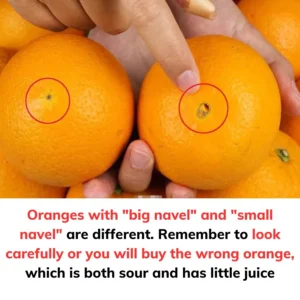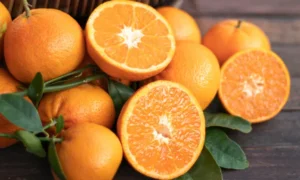Why Big Navel Oranges Are Not What You Think—Choose Wisely!
The Difference Between Large Navel Oranges and Small Navel Oranges
When choosing oranges, look closely at their navels. Some have large, round navels with a deep indentation, while others just have a small dot.
There is a noticeable difference in quality between large navel oranges and small navel oranges. When you cut open large navel oranges, you’ll find the navel is covered by a white membrane. Inside, there are fewer segments, more peel, and the taste is not very appealing. These oranges are usually not sweet and have less juice.
On the other hand, small navel oranges have a less noticeable navel and thinner peel. Their segments are sweeter and juicier. The sweetness and water content make small navel oranges better in quality. When buying oranges, always check the navel to choose the best ones.

How to Choose Delicious Oranges
Aside from the navel, you can use the following tips to pick the best oranges:
1. Color
The bright orange color is the first thing that stands out when you look at oranges. However, if you observe closely, you’ll notice oranges come in different shades. For the same variety, darker oranges get more sunlight, which helps them store more sugar. These oranges are sweeter and juicier, so choose fruits with a deep orange color.

2. Shape
Oranges come in various shapes—oval, round, plump, or even rough and wrinkled. If you want sweet and juicy oranges, pick the round ones as they tend to be the best tasting.
3. Weight and Feel
Hold the orange in your hand to check its weight. A large orange isn’t always heavy—it could have thick skin and dry segments. Choose oranges that feel heavy because they are fresher and juicier.
Also, feel the texture of the fruit. Fresh, ripe oranges will have a slight elasticity when you press them. If the orange is hard to press, it likely has a thick peel and won’t taste as good.
